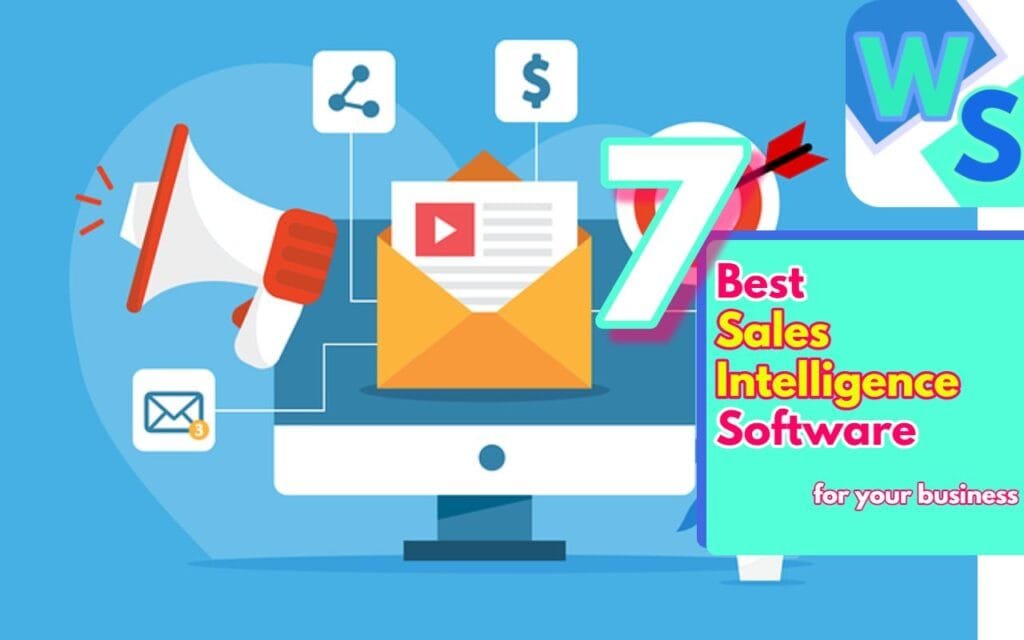Maximizing Customer Base
Maximizing your customer base involves employing effective data monetization strategies. By leveraging your existing data, you can transform insights into profitable opportunities, driving growth and enhancing your overall business outcomes.
Data Monetization Strategies
One successful approach to customer base monetization is utilizing your organization’s data to generate additional revenue streams. Businesses such as Amazon have successfully done this by transforming internal products into monetizable services. For instance, Amazon Web Services (AWS) was initially designed to support Amazon’s e-commerce infrastructure and is now a major revenue contributor in its own right (Department of Product).
Various monetization models can be adopted to enhance your revenue, including:
| Monetization Strategy | Description |
|---|---|
| Software Licensing | Selling licenses for software usage. |
| Subscription Model | Charging customers a recurring fee for access to services. |
| Freemium Model | Offering basic services for free while charging for advanced features. |
| In-app Purchases | Generating revenue by selling additional features within an app. |
| Affiliate Marketing | Earning commissions by promoting products from other companies. |
| Lead Generation | Selling gathered leads to other businesses. |
Companies like Mastercard monetize their data by providing valuable insights to clients in various sectors, such as finance and retail, enhancing decision-making processes and operational efficiency (Veezoo). Similarly, Progressive Insurance uses data collected from drivers through its Snapshot program to offer personalized discounts while simultaneously generating revenue from this data analysis (Veezoo).
Internal Data Monetization Opportunities
You can also explore internal data monetization opportunities by unearthing valuable insights within your organization. This entails analyzing customer behavior, preferences, and needs to create tailored offerings that can enhance revenue.
Spotify exemplifies effective internal data monetization through its platforms for artists and brands. By providing data-driven insights and analytics, Spotify creates additional revenue streams that are beneficial to artists, record labels, and advertisers. Prioritizing effective customer relationship management strategies and employing customer demographics analysis can also aid in discovering opportunities for internal data monetization.
Taking the time to implement these customer base monetization strategies will not only assist in growing your business but also enhance your decision-making capabilities and overall market reach. For more insights into acquiring and expanding your customer base, visit our guides on customer acquisition tactics and expanding market reach.
External Data Monetization
In the realm of customer base monetization strategies, external data monetization plays a pivotal role. By leveraging your data, you can create additional revenue streams that enhance your business model. This section covers two primary external monetization approaches: offering data as a service and selling insights and reports.
Offering Data as a Service
Offering data as a service (DaaS) involves packaging your data and making it available for others to access, analyze, or utilize in their operations. This approach allows businesses to capitalize on the vast amounts of data they collect by selling access to it.
Organizations can create data products or services that cater to specific industries or market segments. This can include subscription models that provide tiered access to valuable datasets, benchmark reports, or compiled lists of contact information. The flexibility in your offerings allows you to address varying customer needs while maximizing revenue potential.
| Feature | Description |
|---|---|
| Access Type | Subscription or one-time purchase |
| Data Provided | Raw data, processed insights, or benchmark reports |
| Target Audience | Businesses seeking data for analysis or decision making |
According to a McKinsey analysis, organizations that engage in data monetization efforts can distinguish themselves within their industries, leading to enhanced performance.
Selling Insights and Reports
Selling insights and reports is another effective external monetization strategy. This involves not just providing datasets, but interpreting and presenting the data in a meaningful way. Organizations can create detailed market insights and reports based on their data analysis and sell them as premium content or as part of a subscription service.
This model allows you to tap into your existing customer intelligence and market trends, allowing others to benefit from your expertise. Companies may offer specialized insights on customer demographics, purchasing behavior, or market trends, which can be invaluable to businesses across various sectors.
| Insight Type | Description |
|---|---|
| Market Reports | Comprehensive analyses of trends in specific markets |
| Benchmarking | Comparing performance metrics against competitors |
| Custom Insights | Tailored data analysis specific to client needs |
External monetization methods can significantly boost your revenue, provided they are implemented thoughtfully. Coupling these strategies with robust customer relationship management and customer acquisition tactics will further enhance your success in growing and maintaining your customer base.
Getting Started with Data Monetization
Successful data monetization begins with a comprehensive understanding of your data strategy and the capabilities of your current data stack. These initial evaluations will lay the groundwork for effectively implementing customer base monetization strategies.
Assessing Data Strategy
Before embarking on your data monetization journey, it is essential to assess your existing data strategy. This involves evaluating how your organization currently collects, manages, and utilizes data. According to Analytics8, effective data monetization is linked with industry-leading performance. To ensure that you are on the right track, consider the following factors:
| Assessment Factor | Description |
|---|---|
| Data Quality | Ensure data is accurate, complete, and reliable. |
| Data Sources | Identify all sources of data, including internal, external, and third-party sources. |
| Data Governance | Establish processes for data integrity, privacy, and compliance. |
| Data Utilization | Analyze how data is currently being used to inform business decisions. |
Reviewing Data Stack Capabilities
Your data stack refers to the technological infrastructure that supports data collection, processing, and analysis. A thorough review of your data stack capabilities is crucial for identifying any gaps that may hinder your monetization efforts. Consider the following components:
| Technology Component | Description |
|---|---|
| Data Storage | Evaluate the current storage solutions and their scalability for growth. |
| Data Processing | Assess the tools used for data processing and whether they support real-time analytics. |
| Analytics Tools | Examine your current analytics capabilities for generating insights from data. |
| Integration | Check the ability of your systems to integrate with new technologies and data sources. |
By 2022, it’s anticipated that 35% of large organizations will engage in data transactions through formal online data marketplaces (Stibo Systems). Therefore, ensuring that your data stack can support such initiatives is imperative. Furthermore, if your business processes are not optimized for leveraging data monetization opportunities, consider investing in new technology and infrastructure to enhance your capabilities (Analytics8).
Incorporating a robust assessment of your data strategy and reviewing your data stack capabilities will set the foundation for successful implementation of your monetization strategies. For more insights on growing and maintaining your customer base, explore our guides on customer relationship management strategies and customer acquisition tactics.
Monetization Models
Understanding different monetization models can significantly enhance your approach to growing your customer base. Here, we will explore two effective strategies: the Subscription Model and the Freemium Model.
Subscription Model
The Subscription Model entails customers paying a recurring fee for ongoing access to a product or service. This approach leads to predictable revenue, fosters customer loyalty, and provides scalability. It is particularly advantageous for services such as Software as a Service (SaaS), streaming platforms, and subscription boxes. According to Moesif, businesses like HubSpot have effectively leveraged this model to generate substantial revenue by offering products through subscription plans.
| Advantages of the Subscription Model | Examples of Subscription Services |
|---|---|
| Predictable revenue stream | SaaS platforms (e.g., Salesforce) |
| Enhanced customer loyalty | Streaming services (e.g., Netflix) |
| Scalability potential | Subscription boxes (e.g., Birchbox) |
This model not only ensures a steady cash flow but also allows for regular updates and improvements to the service, keeping customers engaged and retained over time.
Freemium Model
The Freemium Model offers basic services for free while charging for advanced features. This strategy allows for easy user acquisition and has the potential to create a high-volume user base. However, converting free users to paid customers can pose challenges. This model is commonly used for digital products, including apps, software, or online platforms. As detailed by Moesif, the freemium approach facilitates user growth and provides a means for customers to evaluate the product before committing to a purchase.
| Advantages of the Freemium Model | Potential Challenges |
|---|---|
| High user acquisition rates | Converting free users to paid |
| Customer product evaluation | Managing service costs |
| Progression to premium features | Balancing free vs paid features |
The effective use of the Freemium Model can enhance customer acquisition, retention, and engagement by allowing users to experience the basic offerings before considering an upgrade. This model ultimately aids in your overall customer acquisition tactics and can be complemented by effective customer relationship management strategies.
By considering these monetization models, you can select the right strategy to maximize your customer base and enhance your overall marketing effectiveness.
Business Transformation through Data
As a business owner or executive, transforming your operations through data necessitates the implementation of strategic success plans and tiered offerings. These approaches can help you optimize your customer base monetization strategies effectively.
Success Plans for Revenue
Transitioning from viewing customer success as merely a cost function to recognizing it as a revenue stream is vital for businesses today. Many large enterprises, such as banks and tech giants, are inclined to pay for personalized services. This shift can lead to the development of tailored service packages, often referred to as “experience packages,” which encompass various components, including professional service hours, education hours, health checks, architecture reviews, and adoption consulting (Customer Success Collective).
Key Components of Success Plans:
| Component | Description |
|---|---|
| Professional Service Hours | Direct support to address client-specific challenges. |
| Education Hours | Training and knowledge-sharing sessions tailored to the client’s needs. |
| Health Checks | Regular assessments of platform or product usage and effectiveness. |
| Architecture Reviews | Expertise on optimizing the use of products in clients’ environments. |
| Adoption Consulting | Guidance on implementing and maximizing the value from products. |
Educating your sales team on the benefits of these success plans and committing to deliverables can facilitate increased customer retention and opportunities for upselling and cross-selling. Providing clear collateral detailing deliverables and selling points will assist the sales team in accurately pitching success plans to customers.
Tiered Success Plans
Offering tiered success plans allows businesses to cater to a diverse range of customer needs and preferences. By developing different pricing tiers, you can appeal to varying customer segments and maximize revenue generation. Higher-end plans may be designed for clients seeking extensive support, including additional technical resources, while lower-tier plans could focus more on customer success management (CSM) resources (Customer Success Collective).
Example of Tiered Success Plans:
| Plan Tier | Features Included | Ideal Customer Profile |
|---|---|---|
| Basic | Limited CSM resources, online training | Startups or small businesses |
| Standard | 1-2 health checks, moderate professional services | Medium-sized businesses |
| Premium | Comprehensive support, advanced training, dedicated CSM | Large enterprises |
When structuring these tiers, collaboration across different functions is crucial. For instance, including professional service hours may require seamless interaction between various departments, including education, finance, and health check functions, to ensure successful plan execution (Customer Success Collective).
Before implementing these monetization strategies, consider conducting a thorough customer segmentation analysis to ascertain the requirements of each customer type. This understanding will allow you to tailor your offerings, calculate the delivery costs, and set a healthy margin of around 35% for each plan. Piloting this approach with a small segment of your customer base can help refine your plans and strategies further.
By adopting success and tiered plans, your business can harness data to drive transformation and achieve sustainable revenue growth.
Innovative Monetization Approaches
Collaborative Revenue Strategies
Collaborative revenue strategies have the potential to unlock new revenue streams by leveraging partnerships and shared resources. For instance, Allstate insurance utilizes its subsidiary Aris to share vehicle telematics information with advertising companies and other businesses. This approach generates new revenue models based on location data, creating added value for both parties (Stibo Systems).
Engaging in collaborative customer relationships enables businesses to enhance their portfolios through both hardware- and software-based solutions. By providing additional value to clients, companies can maximize opportunities for follow-on sales and upsells. This strategy can be particularly effective in developing long-term relationships with customers, leading to increased loyalty and satisfaction.
| Strategy Type | Benefit |
|---|---|
| Data Sharing | New revenue models from partners |
| Enhanced Solutions | Increase in upsells and sales |
Advanced Customer Retention Techniques
Advanced customer retention techniques are essential for fostering loyalty and repeat business. One effective method is to educate your sales team on the benefits of success plans, which can enhance customer retention and open doors for upselling and cross-selling opportunities. This commitment to delivering value can elevate the overall customer experience.
Offering tiered success plans tailored to different customer personas allows companies to meet diverse needs and preferences. This approach not only drives revenue but also ensures superior customer satisfaction by catering to varying requirements (Customer Success Collective).
| Retention Technique | Purpose |
|---|---|
| Sales Team Education | Enhance retention and sales |
| Tiered Plans | Cater to diverse customer needs |
Implementing these innovative monetization approaches can significantly contribute to your overall customer base monetization strategies. By fostering collaborations and refining retention techniques, you can position your business for sustained growth and success. Consider exploring additional methods such as customer demographics analysis and improving customer loyalty to further enhance your strategies.





















